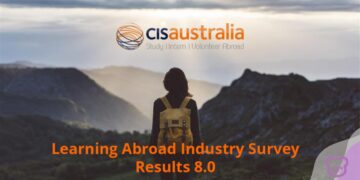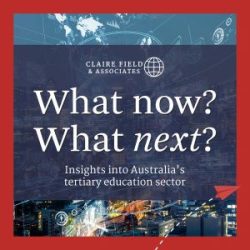Most of us working in Australia’s international education sector have lamented the headline-grabbing talking points of our politicians. In recent years, we’ve heard about ‘shonks and crooks’ and ‘dodgy providers’. But two seemingly innocuous statistics used at last week’s Australia International Education Conference (AIEC) caught my attention.
Julian Hill, Assistant Minister for International Education and Tim Watts, Special Envoy for Indian Ocean Affairs both highlighted that only 14 per cent of Australia’s international students come from Southeast Asia, and that in 2022 more student visa applications came from Nepal than China. How these figures were framed, and what they were used to imply, warrant closer scrutiny.
Diversification simplification
Diversification of Australia’s international student population has been a government focus for decades (see former Education Minister Brendan Nelson’s Ministerial statement from 2003, Engaging the World through Education). It remains a priority for this current government, with Hill telling the AIEC in his keynote address that “a part of offering a true international experience is a genuinely diverse student cohort”.
We also know that engagement with Southeast Asia, consistent with Invested: Australia’s Southeast Asia Economic Strategy to 2040, was a criterion for Australian universities seeking growth in their 2026 new overseas student commencement (NOSC) allocations.
What struck me was how a complex policy challenge like diversification was reduced to a single statistic, used by Hill and Watts that only 14 per cent of Australia’s international students come from Southeast Asia. My initial concern was the suggestion that this figure was due to an underperformance by the sector, rather than recognising the complexity of a changing education landscape.
Post-AIEC and driven by my background as ASEAN Education Commissioner from 2014-2016, I examined the Department of Education’s International Student Data. What I found was that I couldn’t replicate the 14 per cent talking point, and that there has only been a minor change in the last ten years when comparing enrolments and commencements.
When comparing August year-to-date data for 2015 and 2025 in Table 1 below:
- Enrolments from Southeast Asia in Australia were 19% and 18% respectively
- Commencements from Southeast Asia were 19% and 17% respectively
| Table 1 | YTD Enrolments (August) | YTD Commencements (August) | ||
| 2015 | 2025 | 2015 | 2025 | |
| Southeast Asia | 109,088 | 172,168 | 55,442 | 65,860 |
| All nationalities | 561,823 | 955,317 | 295,541 | 376,856 |
| % Southeast Asia | 19% | 18% | 19% | 17% |
Here’s how the full year data for 2014 and 2024 in Table 2 compares:
- Enrolments from Southeast Asia in Australia were 20% and 19% respectively
- Commencements from Southeast Asia were 19% and 18% respectively
| Table 2 | Enrolments (full year) | Commencements (full year) | ||
| 2014 | 2024 | 2014 | 2024 | |
| Southeast Asia | 117,550 | 207,815 | 67,488 | 104,084 |
| All nationalities | 586,439 | 1,089,256 | 351,446 | 566,047 |
| % Southeast Asia | 20% | 19% | 19% | 18% |
Onshore enrolment figures only tell part of the story of Australia’s international education engagement with Southeast Asia. They don’t account for the extensive transnational education presence of Australian providers in the region. Indeed, this is an area that the current government is encouraging providers to expand into and Hill himself acknowledged during his AIEC keynote address that “Australian branch campuses in Southeast Asia already deliver to over 35,000 students”.
It also doesn’t reflect other structural shifts in the region, such as the growth of domestic higher education capacity within ASEAN countries and the political and economic developments that impact regional student mobility, such as the 2021 military coup in Myanmar.
The suggestion that Australia is underperforming in Southeast Asia doesn’t hold up under closer examination of the Government’s own data. The share of students from the region has remained largely steady for a decade, while transnational education has grown significantly. A single onshore enrolment figure, whatever it may be, cannot meaningfully represent the depth and diversity of Australia’s engagement with Southeast Asia today.
Integrity trope
It’s a fact of politics that politicians often use public platforms to score points against their political opponents. In his keynote address, Hill criticised the former Morrison Government’s decision to uncap international student work hours in 2022. While the policy decision warrants criticism, it is now more than three years ago, and the Labor Government is not without fault in its slow action to reverse it.
Hill highlighted that “this led to the ridiculous situation where in May 2022 Australia had more applications for students from Nepal than from China,”.
Watts reiterated the point: “when we came to government in 2022 we were seeing more visa applications from Nepal than China, and I think people can draw inferences about why that was”.
The issue with continuing to use this narrative is twofold. Firstly, repeating this narrative without context, and asking audiences to “draw inferences” about nationality-based visa trends, can be interpreted as racially insensitive. If the government believes a significant portion of these applications were non-genuine, it should release supporting data, such as the proportion of students who transferred from universities to private VET providers, or who failed to meet study requirements.
Secondly, framing the discussion this way reduces it to a political point-scoring exercise. Focusing on nationality ignores the opportunity to address the substantive issue of both non-genuine students and non-genuine providers (a systemic approach of demand and supply, which regular readers will know is a recurring issue I’ve raised in previous commentary).
The risk of oversimplification
The talking points used at AIEC oversimplify complex issues. The 14 per cent statistic doesn’t reflect the full picture of Australia’s engagement with Southeast Asia, especially when transnational education and regional shifts are considered. Similarly, the repeated reference to Nepal overtaking China in visa applications risks being misinterpreted and distracts from the need to address both non-genuine students and providers.
Oversimplified statistics may make headlines, but they do little to inform the nuanced, evidence-based policy work needed in Australia’s international education sector.

















